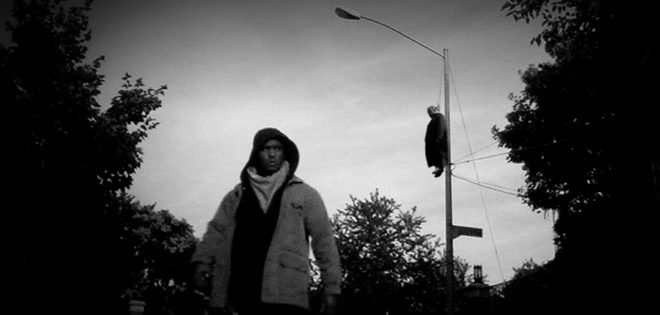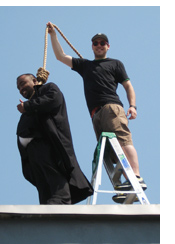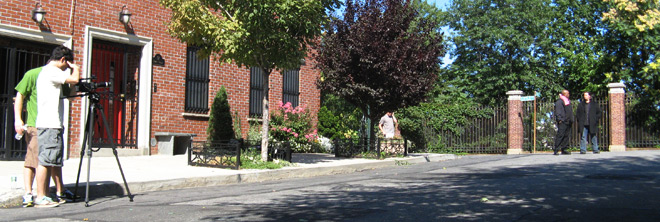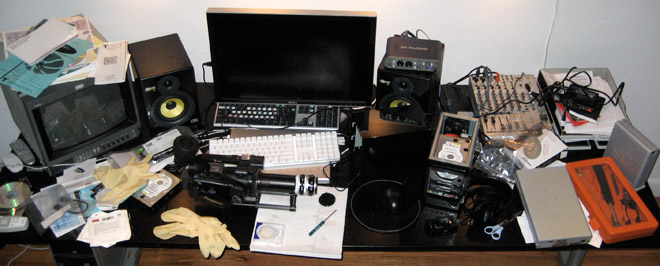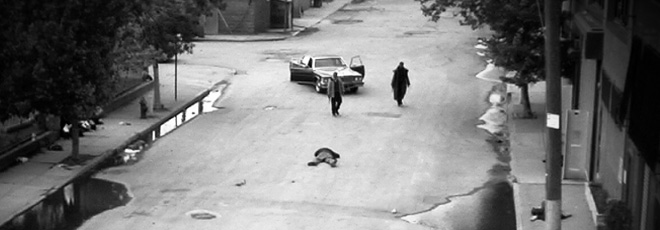
It’s been six months since we posted Episode Four, and we’re well aware that Episode Five is long overdue. Unfortunately, we’re not posting here to release a new episode, but rather to announce The West Side is on hiatus.
The story is this: after eight months spent writing the series, we realized it was unlikely we’d be able to self-produce all twelve scripted episodes. As the story grew in scope from episode to episode, so too would the budget and time requirements, to the point where we wouldn’t be able to produce it ourselves. We looked at the first act, saw it concluded with a challenging setpiece (the gun battle that ends Episode Four), and told ourselves we needed to get through the first four episodes on our own. After that — if we’d applied ourselves fully and had managed to realize a compelling urban western, as we’d set out to — some kind of door would open for us, hopefully enabling us to continue the series.
We were ecstatic when, upon the release of Episode Four, even more than we’d hoped for happened: we won the Webby Award for Best Drama Series, and then were featured as two of Filmmaker Magazine’s 25 New Faces of Independent Film.
These recognitions garnered us representation in LA and although we didn’t inquire very intently into commercial possibilities for our series, it seems the market for plodding black-and-white internet urban westerns isn’t a lucrative one. Who knew? The West Side is slow, edgy, and advertiser-unfriendly, and as such, we can’t exactly outfit Qasim in J. Crew or give Magner a Pepsi to drink. And that’s exactly how we’d always wanted the show: to stand out from a crowd of more hastily-produced and paced internet videos. The West Side wasn’t supposed to be commercial, and it’s not.
Thus we arrive at our current dilemma. Self-production can be a costly venture and if we continue shooting on nights and weekends in the same guerrilla style as before, we won’t complete the remaining eight episodes for many, many months. Years, even. So we’ve officially gone on hiatus, to explore full-time options for The West Side as well as other film and internet projects. We would love to finish the series — to allow our character arcs to play out, to flesh out the themes just beginning to take root in the first four episodes, to tell the story we’d spent eight months writing and rewriting — but unfortunately it’s just not feasible for us to wrap the project under the present circumstances.
Now, if by some miracle someone out there feels like funding the remaining episodes, by all means contact us; you’ll be surprised by how cheap this production is. And despite the lack of product placement opportunities, there are still plenty of ways to monetize the content. For the rest of you, if you think you might know someone who’d be interested in independent internet film finance, by all means… tell a friend.
Ultimately, however, the making of The West Side is not a story that ends with a lack of financing — money is the one thing we never pursued in this whole endeavor (until we tainted it with the previous paragraph). Instead, The West Side was intended to launch a couple of film careers, and in that respect it’s been an unmitigated success. Not that we’re established in any way, but now we have our feet in a number of doors and that’s all we ever wanted.
Online video is still a nascent concept, and we’re sure in the future many internet filmmakers will launch careers more rapidly and to more fanfare than we have — but it’s been a pleasure driving blind, as it were, not knowing where this ride was going to take us. For all of you who’ve watched the show to date, our sincerest thanks. We built our own niche apart from the rest of the internet video world, and we really appreciate you coming on the journey with us. Here’s hoping it continues soon.

